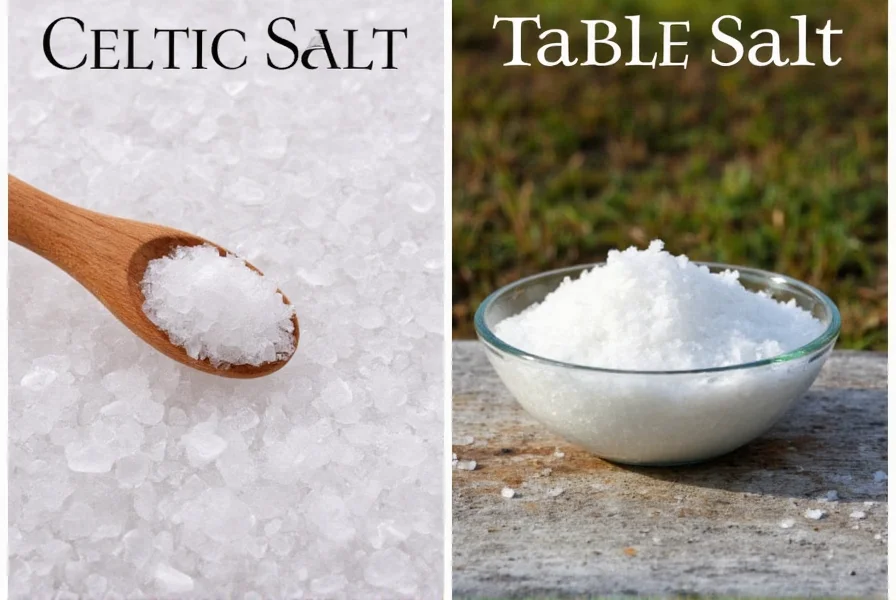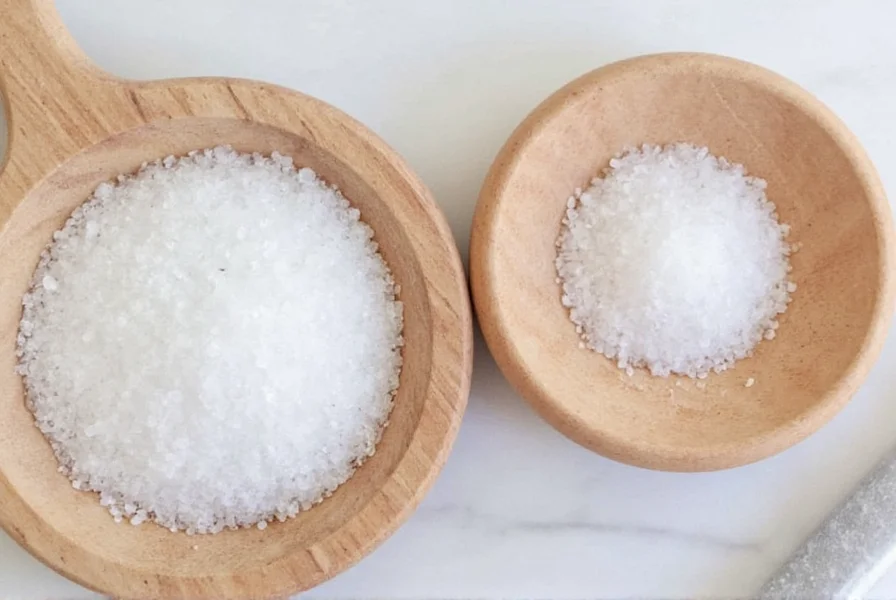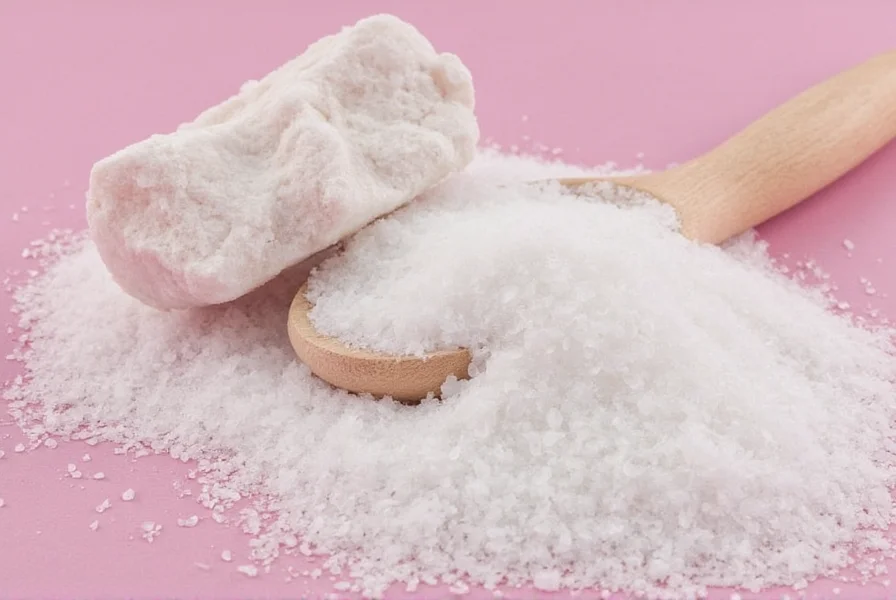Celtic Salt vs. Table Salt: Why Your Minerals Might Be Missing Out!
If you're a spice lover or just curious about natural alternatives to everyday ingredients, you've probably come across Celtic salt. Known for its rich mineral content and unique texture, Celtic salt is more than just a fancy kitchen staple — it's a powerhouse of nutrition.

Table of Contents
- Introduction to Celtic Salt
- What Makes Celtic Salt Unique?
- Celtic Salt vs. Regular Table Salt: A Mineral Showdown
- Health Benefits of Celtic Salt’s Mineral Content
- How to Use Celtic Salt in Cooking (Like a Pro)
- Buying Guide: How to Choose the Best Celtic Salt
- Conclusion
Introduction to Celtic Salt
Celtic salt — also known as Guerande salt or sel gris — hails from the coastal regions of France. Unlike table salt, which undergoes heavy processing, Celtic salt is harvested by hand using traditional methods that preserve its natural moisture and mineral content.
This coarse, light gray salt has a slightly damp texture due to its high trace mineral concentration. It’s often used in gourmet cooking and holistic wellness practices because of its flavor complexity and health-boosting properties.

What Makes Celtic Salt Unique?
The magic lies in the mineral content. While regular table salt is stripped of nearly all nutrients during refining, Celtic salt retains over 80 naturally occurring minerals like magnesium, potassium, calcium, and iron.
- Magnesium: Supports muscle and nerve function
- Potassium: Helps regulate blood pressure
- Calcium: Essential for bone health
- Iron: Crucial for oxygen transport in blood
These minerals not only add depth to the flavor but also contribute to overall well-being — making Celtic salt a favorite among chefs and health enthusiasts alike.
Celtic Salt vs. Regular Table Salt: A Mineral Showdown
| Nutrient | Celtic Salt (per 1g) | Regular Table Salt (per 1g) |
|---|---|---|
| Sodium | 380mg | 390mg |
| Magnesium | 11mg | 0.1mg |
| Potassium | 5mg | 0.1mg |
| Calcium | 4mg | 0.2mg |
| Trace Minerals | 80+ | ~0 |
As seen above, both salts contain similar amounts of sodium, but Celtic salt wins hands down when it comes to nutritional value. You get the same salty punch with way more perks.
Health Benefits of Celtic Salt’s Mineral Content
Because it’s loaded with essential minerals, Celtic salt can be a smart addition to your daily diet. Here are some science-backed benefits:
- Balances Electrolytes: The potassium and magnesium help keep your electrolyte levels stable, especially after workouts.
- Supports Digestive Health: Trace minerals can stimulate digestive enzymes and improve nutrient absorption.
- Boosts Hydration: Sodium plus natural minerals helps your body retain water better — perfect for hot days or active lifestyles.
- Reduces Muscle Cramps: Magnesium and potassium work together to prevent cramping and fatigue.

How to Use Celtic Salt in Cooking (Like a Pro)
You don’t need a Michelin-starred chef’s title to make the most of Celtic salt. Whether you’re baking, grilling, or simply seasoning a salad, here are a few pro tips:
- Use it for finishing dishes: Sprinkle a pinch on top of soups, salads, roasted veggies, or avocado toast right before serving.
- Make a salt block: Press Celtic salt into blocks for grilling seafood, steak, or even fruit — it adds subtle flavor while enhancing presentation.
- Infuse oils or brines: Let Celtic salt sit in olive oil or vinegar overnight to create flavorful bases for dressings or marinades.
- Bake smarter: Substitute a portion of regular salt with Celtic salt in bread doughs or pastries for a richer taste.
- DIY bath salts: Mix with Epsom salt and essential oils for a detoxifying at-home spa experience.
Buying Guide: How to Choose the Best Celtic Salt
With so many options on the market, how do you pick the real deal? Here’s what to look for:
- Purity: Make sure the label says “unrefined” or “raw.” Avoid additives like anti-caking agents or iodine unless specifically desired.
- Texture: Coarse and moist is ideal. If it’s too dry or fine, it might have been overly processed.
- Origin: Authentic Celtic salt comes from Guérande or Île de Ré in France. Look for the “Fleur de Sel” or “Sel de Guérande” certification if possible.
- Packaging: Glass jars or resealable pouches help maintain freshness and protect against moisture loss.
- Price: Real Celtic salt isn’t cheap. Expect to pay $8–$20 per pound depending on brand and packaging.
| Brand | Key Features | Best For | Recommended Use |
|---|---|---|---|
| Le Guérandais | Certified organic, hand-harvested from Guérande, France | Gourmet cooking and artisanal bakers | Finishing dishes, sea salt caramels |
| Celtic Sea Salt Co. | Moist, unrefined, with high mineral content | Everyday use and wellness-focused individuals | Salad dressing, DIY bath scrubs |
| Bailey Saltworks | Locally sourced with sustainable harvesting | Eco-conscious buyers and foodies | Marinades, smoked meats, and rubs |
Conclusion
If you’ve been missing out on the magic of Celtic salt, now’s the time to give it a try. With its rich mineral content, earthy flavor, and versatility in the kitchen, this ancient salt offers more than just a salty kick — it brings a whole new level of goodness to your meals.
Whether you’re a seasoned chef or a home cook looking to upgrade your pantry staples, adding Celtic salt to your collection could be one of the tastiest decisions you make all year. So go ahead, sprinkle some mineral-rich magic on your next dish and let your taste buds (and your body) thank you later!










 浙公网安备
33010002000092号
浙公网安备
33010002000092号 浙B2-20120091-4
浙B2-20120091-4